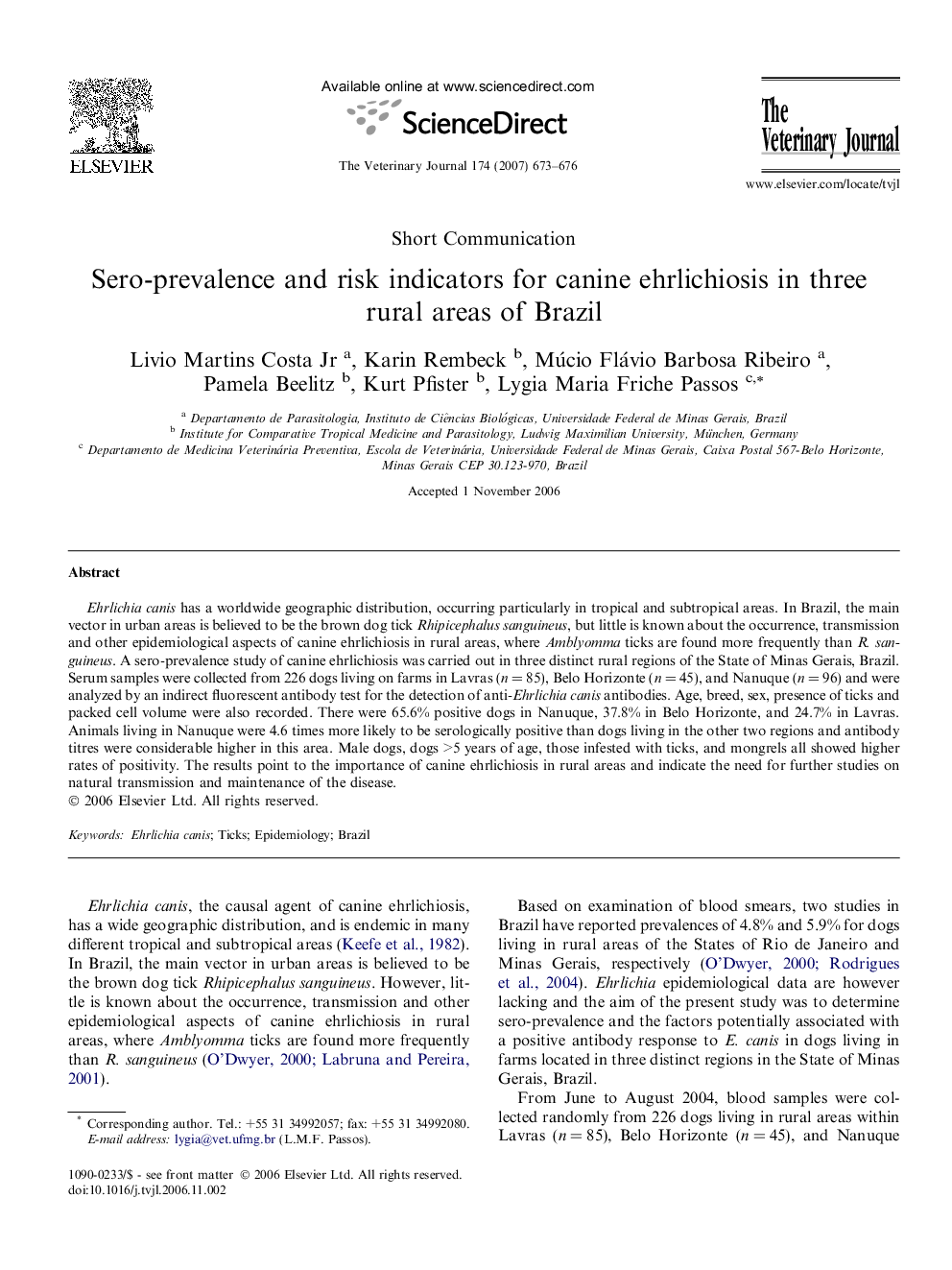| کد مقاله | کد نشریه | سال انتشار | مقاله انگلیسی | نسخه تمام متن |
|---|---|---|---|---|
| 5799567 | 1111842 | 2007 | 4 صفحه PDF | دانلود رایگان |

Ehrlichia canis has a worldwide geographic distribution, occurring particularly in tropical and subtropical areas. In Brazil, the main vector in urban areas is believed to be the brown dog tick Rhipicephalus sanguineus, but little is known about the occurrence, transmission and other epidemiological aspects of canine ehrlichiosis in rural areas, where Amblyomma ticks are found more frequently than R. sanguineus. A sero-prevalence study of canine ehrlichiosis was carried out in three distinct rural regions of the State of Minas Gerais, Brazil. Serum samples were collected from 226 dogs living on farms in Lavras (n = 85), Belo Horizonte (n = 45), and Nanuque (n = 96) and were analyzed by an indirect fluorescent antibody test for the detection of anti-Ehrlichia canis antibodies. Age, breed, sex, presence of ticks and packed cell volume were also recorded. There were 65.6% positive dogs in Nanuque, 37.8% in Belo Horizonte, and 24.7% in Lavras. Animals living in Nanuque were 4.6 times more likely to be serologically positive than dogs living in the other two regions and antibody titres were considerable higher in this area. Male dogs, dogs >5 years of age, those infested with ticks, and mongrels all showed higher rates of positivity. The results point to the importance of canine ehrlichiosis in rural areas and indicate the need for further studies on natural transmission and maintenance of the disease.
Journal: The Veterinary Journal - Volume 174, Issue 3, November 2007, Pages 673-676